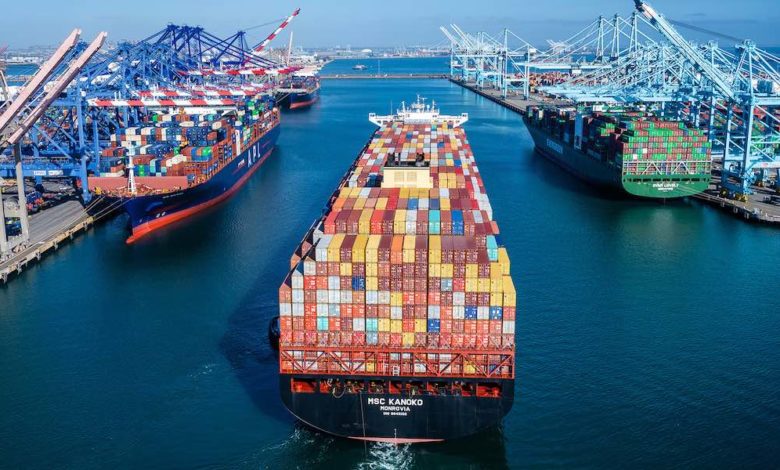Ports of Los Angeles and Shanghai partnering to create world’s first transpacific green shipping corridor

Two of the most important port pairings in global container shipping are to create a so-called green corridor. The Port of Los Angeles and the Port of Shanghai have committed to create a green shipping corridor on one of the world’s busiest container shipping routes. With C40 Cities – a network of mayors of nearly 100 cities around the world collaborating to deliver action needed to confront the climate crisis – the partners will work to reduce greenhouse gas emissions, phasing in low-carbon, ultra-low-carbon, and zero-carbon fuelled ships through the 2020s, and, by 2030, begin to transition to zero-carbon fuelled ships.
The two ports and industry partners – A.P. Moller – Maersk, CMA CGM, Shanghai International Ports Group, COSCO Shipping Lines, the Aspen Institute’s Shipping Decarbonisation Initiative, facilitators of Cargo Owners for Zero Emission Vessels (coZEV) and the Maritime Technology Cooperation Centre-Asia – will deliver an implementation plan for the green corridor by the end of 2022. The plan will include deliverables, milestones and roles for the partnership.
As well as lowering GHG emissions from vessels in the corridor, the partners will reduce supply chain emissions from port operations to improve air quality in the ports of Shanghai and Los Angeles and adjacent communities.
The global shipping industry is responsible for 3% of global GHG emissions. Establishing green shipping corridors is one way to enable the early adoption of long-term decarbonisation solutions for international shipping, especially along major routes.
At COP26, the United Nations climate summit in Glasgow in November 2021, 22 nations signed the Clydebank Declaration, vowing to work together to support the development of green shipping corridors. At the time, China was not one of the original signatories.
Commenting on the news from Glasgow at the time, Nick Brown, CEO of British classification society Lloyd’s Register, told Splash: “Highlighting major port hubs and specific trade routes enables a full understanding of where the first land-based infrastructure investments in the production of new fuels could have the biggest initial impact. Green corridors are essential to support first mover viability.”

This is obviously to be welcomed. It does however overlook the problem of emissions on the landside ends of this proposed corridor. The combined emissions of trucks serving these ports, particularly the US ports probably outstrips that originating from the ocean passage component of any container transport. Unless this is factored in then the maritime initiative will be blunted.